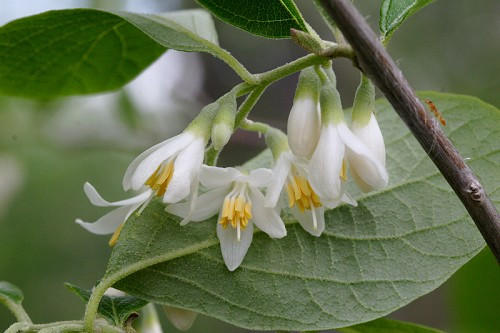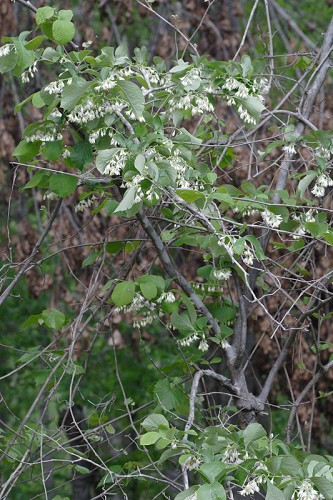
Common Name: Bigleaf Snowbell
Part sun to light shade; medium to moderately dry moisture level; best on sandy loam soil but tolerates clay loams; slightly acid to slightly alkaline pH.
8-25 feet height by 6-15 feet spread; blooms in late spring; white flowers; nut-like, dark brown fruits.
Growth Rate: Relatively fast
Maintenance: Plants may be self-incompatible in that seeds cannot be produced if the plant grouping is composed of a single vegetative individual. A healthy thriving population requires a rich genetic mix. Sensitive to both extreme cold and extreme drought. Avoid moisture stress by keeping the soil damp. Benefits from a layer of mulch. Easily overwhelmed by aggressive native and non-native plant species, especially vines.
Propagation: Difficult from cuttings
Native Region: Western Highland Rim, West Tennessee uplands, and southern portions of Ridge and Valley and Blue Ridge provinces
Grows either as a small tree or also, more commonly, as a multi-stemmed, rhizomatous shrub which can form large colonies. Attractive species with showy, fragrant flowers. Only known in the U.S. and grows primarily in the southeast states. Has declined in recent decades and is a source of concern for its ultimate survival due to habitat loss. Usually occurs in non-wetlands and only occasionally in wetlands. Grows mainly in shaded to open upland forests or in the vicinity of floodplain forests, usually on well-drained slopes, in or near wooded ravines and on bluffs.

